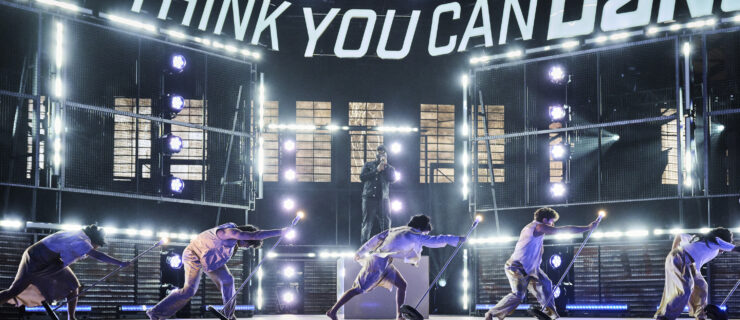Pros Share How to Nail Your Next Quick-Change
Your heart is racing, your adrenaline is pumping, and your friend is zipping up your costume while cheering you on. It must be a quick-change! From shoes to hairpieces to makeup, costume changes between dances have a lot of moving pieces. Luckily, Dance Spirit talked to two quick-change experts—Zoe Lemelman, an incoming Pace University Commercial Dance freshman and competition block-scheduling veteran; and professional dancer Tiffany Griffin—and got their best tips on how to nail your transition drama-free.
Dance Spirit: What does your quick-change preparation look like?
Zoe Lemelman:
As soon as I know the sequence of the show, I always write out the order and highlight my dances. Knowledge is power, and simply being aware of how much time you have is a good place to start.
Once I’ve got the sequence down, I always make sure to lay out each piece of the costume, completely ready to throw it on: zippers down, shoes untied, and pants ready to step right into.
Tiffany Griffin:
In my toughest changes, I’ve fully transformed my look, including shoes and headpieces, in less than 45 seconds! Laying things out in an orderly way and practicing my changes really helped me. I try to be as self-sufficient as I can.

Griffin backstage at the Santa Fe Opera performing in Rigoletto
Courtesy Griffin
DS: What are your dressing-room essentials?
TG:
Goody hair clips, Göt2b Glued Freeze hairspray, Cover-Roll stretch tape for my toes, water, Pedialyte and a sweat towel. If there’s space backstage for a chair or stool, I’ll use that to place any jewelry, faux ponytails, or headpieces I need to put on during a quick-change.
ZL:
I recommend keeping body glue nearby for any costumes that tend to ride up, and having your water in an easy-to-drink container.
DS: How do you make sure you’re ready for your next dance?
TG:
I always choreograph my costume changes, so they’re consistent and efficient. Just like getting all the steps consistently in your choreography, it takes practice to make your costume changes flow consistently.
ZL:
Deep breaths and a calm mind are hard to come by in a stressful quick-change scenario, but I always make sure to try my best to make those things happen. Getting a sip of water and taking audible deep breaths will help slow your heart rate from the previous exhilarating performance and prepare you to go onstage and kill your next one.

Griffin performing with Step One Dance Company
Courtesy Griffin
DS: What’s an example of your quick-change routine? Do you have any assistance?
TG:
If a fellow cast member can help with a change, that’s always great. You can communicate what you need them to do, so you’re both working on something at the same time. For example, for one of my quick changes when I performed on a cruise ship, I had a leotard and tights layered underneath pants and a jacket. I took the pants and jacket off, stepped into the skirt, and had the cast member zip up my skirt while I put on my headpiece, earrings and gloves.
ZL:
Though having a support system of friends who want to help you is nice, sometimes too many helpers can be overwhelming and, in fact, unhelpful. So I always stick to one or two quick-change buddies. For example, one friend is in charge of unzipping/zipping the back of my costumes, and the other helps with untying/tying shoes.

Lemelman performing at competition
Courtesy Lemelman
DS: Any final advice?
ZL:
My quick-change hack is remembering that I always have more time than I think I do. If I am stressed, not only am I not going to move as efficiently, but I am also going to be exhausted before my next dance! So, I always make sure to take the time that I do have to prepare for my next piece.
TG:
The most important thing is don’t freak out! Stay calm while moving as quickly as you can.




